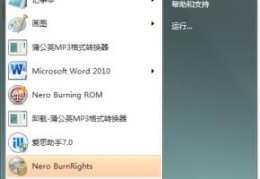目录
- 方法一:System.currentTimeMillis
- 方法二:System.nanoTime
- 方法三:new Date
- 方法四:Spring StopWatch
- 方法五:commons-lang3 StopWatch
- 方法六:Guava Stopwatch
- 原理分析
- 1.Spring StopWatch 原理分析
- 2.Google Stopwatch 原理分析
- 结论
- 总结
- 知识扩展—Stopwatch 让统计更方便
在日常开发中经常需要测试一些代码的执行时间,但又不想使用向 JMH(JavaMicrobenchmark Harness,Java 微基准测试套件)这么重的测试框架,所以本文就汇总了一些 Java 中比较常用的执行时间统计方法,总共包含以下 6 种,如下图所示:
方法一:System.currentTimeMillis
此方法为 Java 内置的方法,使用 System.currentTimeMillis 来执行统计的时间(统计单位:毫秒)(统计单位:毫秒),示例代码如下:
public class TimeIntervalTest {
public static void main(String[] args) throws InterruptedException {
// 开始时间
long stime = System.currentTimeMillis();
// 执行时间(1s)
Thread.sleep(1000);
// 结束时间
long etime = System.currentTimeMillis();
// 计算执行时间
System.out.printf("执行时长:%d 毫秒.", (etime - stime));
}
}
以上程序的执行结果为:
执行时长:1000 毫秒.
方法二:System.nanoTime
此方法为 Java 内置的方法,使用System.nanoTime 来统计执行时间(统计单位:纳秒),它的执行方法和System.currentTimeMillis类似,示例代码如下:
public class TimeIntervalTest {
public static void main(String[] args) throws InterruptedException {
// 开始时间
long stime = System.nanoTime();
// 执行时间(1s)
Thread.sleep(1000);
// 结束时间
long etime = System.nanoTime();
// 计算执行时间
System.out.printf("执行时长:%d 纳秒.", (etime - stime));
}
}
以上程序的执行结果为:
执行时长:1000769200 纳秒.
小贴士:1 毫秒 = 100 万纳秒。
方法三:new Date
此方法也是 Java 的内置方法,在开始执行前new Date()创建一个当前时间对象,在执行结束之后new Date()一个当前执行时间,然后再统计两个Date的时间间隔,示例代码如下:
import java.util.Date;
public class TimeIntervalTest {
public static void main(String[] args) throws InterruptedException {
// 开始时间
Date sdate = new Date();
// 执行时间(1s)
Thread.sleep(1000);
// 结束时间
Date edate = new Date();
// 统计执行时间(毫秒)
System.out.printf("执行时长:%d 毫秒." , (edate.getTime() - sdate.getTime()));
}
}
以上程序的执行结果为:
执行时长:1000 毫秒.
方法四:Spring StopWatch
如果我们使用的是 Spring 或 Spring Boot 项目,可以在项目中直接使用StopWatch对象来统计代码执行时间,示例代码如下:
StopWatch stopWatch = new StopWatch();
// 开始时间
stopWatch.start();
// 执行时间(1s)
Thread.sleep(1000);
// 结束时间
stopWatch.stop();
// 统计执行时间(秒)
System.out.printf("执行时长:%d 秒.%n", stopWatch.getTotalTimeSeconds()); // %n 为换行
// 统计执行时间(毫秒)
System.out.printf("执行时长:%d 毫秒.%n", stopWatch.getTotalTimeMillis());
// 统计执行时间(纳秒)
System.out.printf("执行时长:%d 纳秒.%n", stopWatch.getTotalTimeNanos());
以上程序的执行结果为:
执行时长:0.9996313 秒. 执行时长:999 毫秒. 执行时长:999631300 纳秒.
小贴士:Thread#sleep 方法的执行时间稍有偏差,在 1s 左右都是正常的。
方法五:commons-lang3 StopWatch
如果我们使用的是普通项目,那我们可以用 Apache commons-lang3 中的StopWatch对象来实现时间统计,首先先添加 commons-lang3 的依赖:
<!-- https://mvnrepository.com/artifact/org.apache.commons/commons-lang3 --> <dependency> <groupId>org.apache.commons</groupId> <artifactId>commons-lang3</artifactId> <version>3.10</version> </dependency>
然后编写时间统计代码:
import org.apache.commons.lang3.time.StopWatch;
import java.util.concurrent.TimeUnit;
public class TimeIntervalTest {
public static void main(String[] args) throws InterruptedException {
StopWatch stopWatch = new StopWatch();
// 开始时间
stopWatch.start();
// 执行时间(1s)
Thread.sleep(1000);
// 结束时间
stopWatch.stop();
// 统计执行时间(秒)
System.out.println("执行时长:" + stopWatch.getTime(TimeUnit.SECONDS) + " 秒.");
// 统计执行时间(毫秒)
System.out.println("执行时长:" + stopWatch.getTime(TimeUnit.MILLISECONDS) + " 毫秒.");
// 统计执行时间(纳秒)
System.out.println("执行时长:" + stopWatch.getTime(TimeUnit.NANOSECONDS) + " 纳秒.");
}
}
以上程序的执行结果为:
执行时长:1 秒. 执行时长:1000 毫秒.
执行时长:1000555100 纳秒.
方法六:Guava Stopwatch
除了 Apache 的 commons-lang3 外,还有一个常用的 Java 工具包,那就是 Google 的 Guava,Guava 中也包含了 Stopwatch统计类。首先先添加 Guava 的依赖:
<!-- https://mvnrepository.com/artifact/com.google.guava/guava --> <dependency> <groupId>com.google.guava</groupId> <artifactId>guava</artifactId> <version>29.0-jre</version> </dependency>
然后编写时间统计代码:
import com.google.common.base.Stopwatch;
import java.util.concurrent.TimeUnit;
public class TimeIntervalTest {
public static void main(String[] args) throws InterruptedException {
// 创建并启动计时器
Stopwatch stopwatch = Stopwatch.createStarted();
// 执行时间(1s)
Thread.sleep(1000);
// 停止计时器
stopwatch.stop();
// 执行时间(单位:秒)
System.out.printf("执行时长:%d 秒. %n", stopwatch.elapsed().getSeconds()); // %n 为换行
// 执行时间(单位:毫秒)
System.out.printf("执行时长:%d 豪秒.", stopwatch.elapsed(TimeUnit.MILLISECONDS));
}
}
以上程序的执行结果为:
执行时长:1 秒.
执行时长:1000 豪秒.
原理分析
本文我们从 Spring 和 Google 的 Guava 源码来分析一下,它们的StopWatch对象底层是如何实现的?
1.Spring StopWatch 原理分析
在 Spring 中 StopWatch 的核心源码如下:
package org.springframework.util;
import java.text.NumberFormat;
import java.util.LinkedList;
import java.util.List;
import java.util.concurrent.TimeUnit;
import org.springframework.lang.Nullable;
public class StopWatch {
private final String id;
private boolean keepTaskList;
private final List<StopWatch.TaskInfo> taskList;
private long startTimeNanos;
@Nullable
private String currentTaskName;
@Nullable
private StopWatch.TaskInfo lastTaskInfo;
private int taskCount;
private long totalTimeNanos;
public StopWatch() {
this("");
}
public StopWatch(String id) {
this.keepTaskList = true;
this.taskList = new LinkedList();
this.id = id;
}
public String getId() {
return this.id;
}
public void setKeepTaskList(boolean keepTaskList) {
this.keepTaskList = keepTaskList;
}
public void start() throws IllegalStateException {
this.start("");
}
public void start(String taskName) throws IllegalStateException {
if (this.currentTaskName != null) {
throw new IllegalStateException("Can't start StopWatch: it's already running");
} else {
this.currentTaskName = taskName;
this.startTimeNanos = System.nanoTime();
}
}
public void stop() throws IllegalStateException {
if (this.currentTaskName == null) {
throw new IllegalStateException("Can't stop StopWatch: it's not running");
} else {
long lastTime = System.nanoTime() - this.startTimeNanos;
this.totalTimeNanos += lastTime;
this.lastTaskInfo = new StopWatch.TaskInfo(this.currentTaskName, lastTime);
if (this.keepTaskList) {
this.taskList.add(this.lastTaskInfo);
}
++this.taskCount;
this.currentTaskName = null;
}
}
// .... 忽略其他代码
}
从上述start()和stop()的源码中可以看出,Spring 实现时间统计的本质还是使用了 Java 的内置方法System.nanoTime()来实现的。
2.Google Stopwatch 原理分析
GoogleStopwatch实现的核心源码如下:
public final class Stopwatch {
private final Ticker ticker;
private boolean isRunning;
private long elapsedNanos;
private long startTick;
@CanIgnoreReturnValue
public Stopwatch start() {
Preconditions.checkState(!this.isRunning, "This stopwatch is already running.");
this.isRunning = true;
this.startTick = this.ticker.read();
return this;
}
@CanIgnoreReturnValue
public Stopwatch stop() {
long tick = this.ticker.read();
Preconditions.checkState(this.isRunning, "This stopwatch is already stopped.");
this.isRunning = false;
this.elapsedNanos += tick - this.startTick;
return this;
}
// 忽略其他源码...
}
从上述源码中可以看出Stopwatch对象中调用了ticker类来实现时间统计的,那接下来我们进入ticker类的实现源码:
public abstract class Ticker {
private static final Ticker SYSTEM_TICKER = new Ticker() {
public long read() {
return Platform.systemNanoTime();
}
};
protected Ticker() {
}
public abstract long read();
public static Ticker systemTicker() {
return SYSTEM_TICKER;
}
}
final class Platform {
private static final Logger logger = Logger.getLogger(Platform.class.getName());
private static final PatternCompiler patternCompiler = loadPatternCompiler();
private Platform() {
}
static long systemNanoTime() {
return System.nanoTime();
}
// 忽略其他源码...
}
从上述源码可以看出 GoogleStopwatch&nbhttp://www.cppcns.comsp;实现时间统计的本质还是调用了 Java 内置的System.nanoTime()来实现的。
结论
对于所有框架的StopWatch来说,其底层都是通过调用 Java 内置的System.nanoTime()得到两个时间,开始时间和结束时间,然后再通过结束时间减去开始时间来统计执行时间的。
总结
本文介绍了 6 种实现代码统计的方法,其中 3 种是 Java 内置的方法:
- System.currentTimeMillis()
- System.nanoTime()
- new Date()
还介绍了 3 种常用框架 spring、commons-langs3、guava 的时间统计器 StopWatch。
在没有用到 spring、commons-langs3、guava 任意一种框架的情况下,推荐使用 System.currentTimeMillis() 或 System.nanoTime() 来实现代码统计,否则建议直接使用 StopWatch 对象来统计执行时间。
知识扩展—Stopwatch 让统计更方便
StopWatch 存在的意义是让代码统计更简单,比如 Guava 中 StopWatch 使用示例如下:
import com.google.common.base.Stopwatch;
import java.util.concurrent.TimeUnit;
public class TimeIntervalTest {
public static void main(String[] args) throws InterruptedException {
// 创建并启动计时器
Stopwatch stopwatch = Stopwatch.createStarted();
// 执行时间(1s)
Thread.sleep(1000);
// 停止计时器
stopwatch.stop();
// 执行统计
System.out.printf("执行时长:%d 毫秒. %n",
stopwatch.elapsed(TimeUnit.MILLISECwww.cppcns.comONDS));
// 清空计时器
stopwatch.reset();
// 再次启动统计
stopwatch.start();
// 执行时间(2s)
Thread.sleep(2000);
// 停止计时器
stopwatch.stop();
// 执行统计
System.out.printf("执行时长:%d 秒. %n",
python stopwatch.elapsed(TimeUnit.MILLISECONDS));
}
}
我们可以使用一个Stopwatch对象统计多段代码的执行时间,也可以通过指定时间类型直接统计出对应的时间间隔,比如我们可以指定时http://www.cppcns.com间的统计单位,如秒、毫秒、纳秒等类型。
到此这篇关于Java统计代码的执行时间的6种方法的文章就介绍到这了,更多相关Java统计代码的执行时间内容请搜索我们以前的文章或继续浏览下面的相关文章希望大家以后多多支持我们!
相关文章
本站已关闭游客评论,请登录或者注册后再评论吧~







